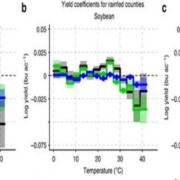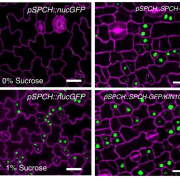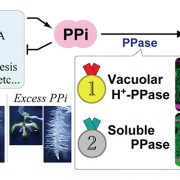A protoxylem-specific NAC transcription factor modulates heat and drought stress in maize (PNAS)

Excessive heat and water deficit coincide with flowering and result in developmental defeats such as male floral organs browning, infertile pollen, and failure in fertilization: a syndrome known as “tassel blasting” in maize. The genetic pathway underlying tassel blasting is not well characterized. Dong et al. report the tissue-specific NAC transcription factor, Necrotic Upper Tips1 (NUT1), maintains the protoxylem cell wall integrity and mediates water transport during floral development. The mutant of nut1 mimics tassel blasting phenotypes, i.e., wilted necrotic leaf tips, blasted tassel, partially sterility and defects in water transport during floral transition stages. This transcription factor binds mostly to the TTGCTT motif and functions mainly as a transcriptional activator. NUT1 protein localizes to the developing protoxylem and it controls genes involved in cellulose biosynthesis and apoptosis and maintains xylem cell wall thickness for long-distance water movement. Interestingly, the monocot and dicot NAC transcription factors have functional divergence given that the nut1 phenotypes in maize have not been reported in Arabidopsis homologs, indicating their distinct regulatory developmental network. Overall, this study provides an insight for promising breeding target in maize to resist water deficit and rising temperature during global climate change. (Summary by Min May Wong @wongminmay) PNAS 10.1073/pnas.2005014117









